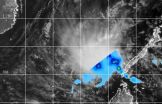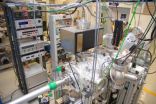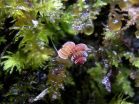(Press-News.org) TAMPA, Fla. (March 25, 2014) – Following ischemic stroke, the integrity of the blood-brain barrier (BBB), which prevents harmful substances such as inflammatory molecules from entering the brain, can be impaired in cerebral areas distant from initial ischemic insult. This disruptive condition, known as diaschisis, can lead to chronic post-stroke deficits, University of South Florida researchers report.
In experiments using laboratory rats modeling ischemic stroke, USF investigators studied the consequences of the compromised BBB at the chronic post-stroke stage. Their findings appear in a recent issue of the Journal of Comparative Neurology.
"Following ischemic stroke, the pathological changes in remote areas of the brain likely contribute to chronic deficits," said neuroscientist and study lead author Svitlana Garbuzova-Davis, PhD, associate professor in the USF Health Department of Neurosurgery and Brain Repair. "These changes are often related to the loss of integrity of the BBB, a condition that should be considered in the development of strategies for treating stroke and its long-term effects."
Edward Haller of the USF Department of Integrative Biology, the coauthor who performed electron microscopy and contributed to image analysis, emphasized that "major BBB damage was found in endothelial and pericyte cells, leading to capillary leakage in both brain hemispheres." These findings were essential in demonstrating persistence of microvascular alterations in chronic ischemic stroke.
While acute stroke is life-threatening, the authors point out that survivors often suffer insufficient blood flow to many parts of the brain that can contribute to persistent damage and disability. Their previous investigation of subacute ischemic stroke showed far-reaching microvascular damage even in areas of the brain opposite from the initial stroke injury. While most studies of stroke and the BBB explore the acute phase of stroke and its effect on the blood-brain barrier, the present study revealed the longer-term effects in various parts of the brain.
The pathologic processes of stroke-induced vascular injury tend to occur in a "time-dependent manner," and can be separated into acute (minutes to hours), subacute (hours to days), and chronic (days to months). BBB incompetence during post-stroke changes is well-documented, with some studies showing the BBB opening can last up to four to five days after stroke. This suggests that harmful substances entering the brain during this prolonged BBB leakage might increase post-ischemic brain injury.
In this study, the researchers used laboratory rats modeling ischemic stroke and observed injury not only in the primary area of the stroke, but also in remote areas, where persistent BBB damage could cause chronic loss of competence.
"Our results showed that the compromised BBB integrity detected in post-ischemic rat cerebral hemisphere capillaries—both ipsilateral and contralateral to initial stroke insult—might indicate chronic diaschisis," Garbuzova-Davis said. "Widespread microvascular damage caused by endothelial cell impairment could aggravate neuronal deterioration. For this reason, chronic diaschisis poses as a therapeutic target for stroke."
The primary focus for therapy development could be restoring endothelial and/or astrocytic integrity towards BBB repair, which may be "beneficial for many chronic stroke patients," senior authors Cesar V. Borlongan and Paul R. Sanberg suggest. The researchers also recommend that cell therapy might be used to replace damaged endothelial cells.
"A combination of cell therapy and the inhibition of inflammatory factors crossing the blood-brain barrier may be a beneficial treatment for stroke," Garbuzova-Davis said.
INFORMATION:
This study was supported by the National Institutes of Health (1RO1NS071956-01A1) and the James and Esther King Biomedical Research Program (1KG01-33966).
Article citation:
Compromised blood-brain barrier competence in remote brain areas in ischemic stroke rats at chronic stage. Garbuzova-Davis S, Haller E, Williams SN, Haim ED, Tajiri N, Hernandez-Ontiveros DG, Frisina-Deyo A, Boffeli SM, Sanberg PR, Borlongan CV. Journal of Comparative Neurology, March 8, 2014. doi: 10.1002/cne.23582.
USF Health's mission is to envision and implement the future of health. It is the partnership of the USF Health Morsani College of Medicine, the College of Nursing, the College of Public Health, the College of Pharmacy, the School of Biomedical Sciences and the School of Physical Therapy and Rehabilitation Sciences; and the USF Physician's Group. The University of South Florida is a Top 50 research university in total research expenditures among both public and private institutions nationwide, according to the National Science Foundation. For more information, visit http://www.health.usf.edu
USF study: Blood-brain barrier repair after stroke may prevent chronic brain deficits
Research to develop stroke therapies should consider that a compromised blood-brain barrier can trigger changes in brain areas remote from the initial damage
2014-03-25
ELSE PRESS RELEASES FROM THIS DATE:
NASA sees remnants of TD04W dissipating in South China Sea
2014-03-25
The remnants of Tropical Depression 04W moved away from Palawan and into the South China Sea on March 25 as NASA's TRMM satellite passed overhead.
NASA's Tropical Rainfall Measuring Mission or TRMM satellite passed over the South China Sea on March 25 at 02:56 UTC/March 25 at 10:56 p.m. EDT and gathered data on rainfall rates occurring in the remnants of TD04W. The image showed that the rainfall associated with the storm had moved away from Palawan and were only falling over the South China Sea. TRMM's Precipitation Radar instrument showed isolated areas where rain was ...
Validation study results show method can replace live animals in skin allergy tests
2014-03-25
Phoenix — Guinea pigs and mice can be replaced with a non-animal skin sensitization method that uses a human-derived skin model, according to a study presented today by the PETA International Science Consortium, Ltd., at the Society of Toxicology's annual meeting.
Recent results show that Cyprotex's in vitro skin sensitization assay SenCeeTox® can correctly identify chemicals that cause an allergic response in humans and, unlike many other methods, can predict the potency of the response. This non-animal method uses a three-dimensional, human-derived skin model that accurately ...
Don't forget F-type stars in search for life, UT Arlington researchers say
2014-03-25
Scientists searching for habitable planets beyond Earth shouldn't overlook F-type stars in favor of their more abundant, smaller and cooler cousins, according to new research from University of Texas at Arlington physicists.
Stars fall into seven lettered categories according to their surface temperature, but they also differ in other factors such as mass, luminosity and abundance in the universe. Scientists looking for habitable planets typically have focused on the less massive end of the spectrum, where our own G-type sun as well as the even less massive K and M-type ...
Model now capable of street-level storm-tide predictions
2014-03-25
The water that surged into the intersection of New York City's Canal and Hudson streets during Hurricane Sandy—to choose just one flood-ravaged locale—was ultimately driven ashore by forces swirling hundreds of miles out in the Atlantic.
That simple fact shows not only the scale and power of a tropical cyclone, but the difficulty of modeling and forecasting its potential for coastal flooding on the fine scale needed to most effectively prepare a response.
Now, a study led by Professor Harry Wang of William & Mary's Virginia Institute of Marine Science demonstrates the ...
Indian women with more resources than their husbands face heightened risk of violence
2014-03-25
NEW YORK (25 March 2014) — A new study has found that women in India who have more education than their husbands, who earn more, or who are the sole earners in their families have a higher likelihood of experiencing frequent and severe intimate partner violence (IPV) than women who are not employed or who are less educated than their spouse.
There are two existing theories that aim to predict what happens when a woman has status and resources that are equal to or greater than her husband's. One theory, called bargaining theory, posits that a woman who has more relative ...
How to look into the Solar interior
2014-03-25
An international group including one professor from the Moscow State University proposed the first ever quantitative description of the mechanism responsible for sunspot formation and underlying the Solar activity cycle.
Magnetic field helicity is one of the so-called motion invariants in magneto-hydrodynamics. It is a conserved quantity, like energy, describing the degree to which the field lines are "wrapped around themselves". During the last 20 years, scientists realized that conservation of this quantity is even more influential upon magnetic field evolution than ...
Micro systems with big commercial potential featured in SPIE journal
2014-03-25
BELLINGHAM, Washington, USA — Commercial demand is driving high-tech research and development in micro-opto-electro-mechanical systems (MOEMS) for diverse applications such as space exploration, wireless systems, and healthcare. A new special section on Emerging MOEMS Technology and Applications in the current issue of the Journal of Micro/Nanolithography, MEMS, and MOEMS (JM3) gathers recent breakthrough achievements and explains how such innovations in the photonics field are poised to emerge in the marketplace. The journal is published by SPIE, the international society ...
Mars-mimicking chamber explores habitability of other planets
2014-03-25
WASHINGTON D.C., March 25, 2014 -- A research team in Spain has the enviable job of testing out new electromechanical gear for potential use in future missions to the "Red Planet." They do it within their Mars environmental simulation chamber, which is specially designed to mimic conditions on the fourth planet from the sun -- right down to its infamous Martian dust.
Mars is a key target for future space exploration, thanks to indications that the planet may have either been capable of supporting life in the past or is possibly even supporting it right now within its ...
Malaysian microjewels going extinct as they are discovered
2014-03-25
A Malaysian-Dutch team of biologists have catalogued all 31 species of the tiny, but oh so pretty snail genus Plectostoma from West-Malaysia, Sumatra, and Thailand. Ten species are new to science, but some of those are going extinct as they are being discovered.
The study was carried out by PhD student Thor-Seng Liew of Naturalis Biodiversity Center in Leiden, The Netherlands, and three colleagues. Liew, who is on study leave from Universiti Malaysia Sabah, spent four years studying the distribution, shell shape, and genetics of these minuscule snails. He is still working ...
First stem cell study of bipolar disorder yields promising results
2014-03-25
ANN ARBOR, Mich. — What makes a person bipolar, prone to manic highs and deep, depressed lows? Why does bipolar disorder run so strongly in families, even though no single gene is to blame? And why is it so hard to find new treatments for a condition that affects 200 million people worldwide?
New stem cell research published by scientists from the University of Michigan Medical School, and fueled by the Heinz C. Prechter Bipolar Research Fund, may help scientists find answers to these questions.
The team used skin from people with bipolar disorder to derive the first-ever ...
LAST 30 PRESS RELEASES:
New deep-learning tool can tell if your salmon is wild or farmed
If you're over 60 and playing with sex toys, you're not alone
Fame itself may be critical factor in shortening singers’ lives
Daily coffee drinking may slow biological ageing of people with major mental illness
New highly efficient material turns motion into power – without toxic lead
The DEVILS in the details: New research reveals how the cosmic landscape impacts the galaxy lifecycle
After nearly 100 years, scientists may have detected dark matter
Gender imbalance hinders equitable environmental governance, say UN scientists
Six University of Tennessee faculty among world’s most highly cited researchers
A type of immune cell could hold a key to preventing scar tissue buildup in wounds
Mountains as water towers: New research highlights warming differences between high and low elevations
University of Tennessee secures $1 million NSF grant to build semiconductor workforce pipeline
Biochar shows powerful potential to build cleaner and more sustainable cities worldwide
UT Health San Antonio leads $4 million study on glucagon hormone’s role in diabetes, obesity
65-year-old framework challenged by modern research
AI tool helps visually impaired users ‘feel’ where objects are in real time
Collaborating minds think alike, processing information in similar ways in a shared task
Routine first trimester ultrasounds lead to earlier detection of fetal anomalies
Royal recognition for university’s dementia work
It’s a bird, it’s a drone, it’s both: AI tech monitors turkey behavior
Bormioli Luigi renews LionGlass deal with Penn State after successful trial run
Are developers prepared to control super-intelligent AI?
A step toward practical photonic quantum neural networks
Study identifies target for disease hyper progression after immunotherapy in kidney cancer
Concordia researchers identify key marker linking coronary artery disease to cognitive decline
HER2-targeted therapy shows promising results in rare bile duct cancers
Metabolic roots of memory loss
Clinical outcomes and in-hospital mortality rate following heart valve replacements at a tertiary-care hospital
Too sick to socialize: How the brain and immune system promote staying in bed
Seal milk more refined than breast milk
[Press-News.org] USF study: Blood-brain barrier repair after stroke may prevent chronic brain deficitsResearch to develop stroke therapies should consider that a compromised blood-brain barrier can trigger changes in brain areas remote from the initial damage






